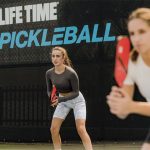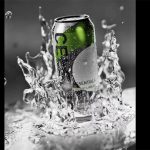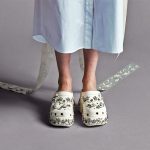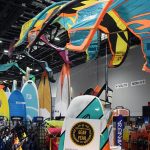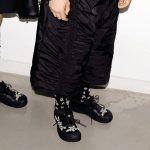The outdoor industry bucked the worries that many financial analysts held over the credit crunch and mortgage crisis, posting strong sales results across the vendor/retailer divide with net income growing in-line as well, excluding one notable write-down.
The B.O.S.S. Report presents an overview of third quarter industry results in the chart on page three. Results are posted for those companies that have reported for the period ended closest to the end of September. One of the biggest impacts on softgoods growth for the quarter remained Crocs, which once again posted the largest organic sales growth. Without the CROX results in the picture, sales would have been up just 9.8%. Other than Crocs, the biggest top-line gains in footwear came from Deckers and LaCrosse. Apparel sales gains were led by Under Armour, Volcom and VFCs Outdoor Coalition including TNF and JanSport. There were no sales declines in the apparel sector. The only sales declines in softgoods came from Timberland as a result of struggles in its boots and kids businesses.
Overall margins in softgoods saw a healthy increase, with a 90 basis point increase in the sector average. Strong margin growth at Crocs, which saw a 240 bps rise in margins, offset decreases at Rocky Brands and Columbia.
Profitability in the softgoods sector was down 31.2% as a result of Quiksilvers sale of the Cleveland Golf business. When factoring in the adjusted net income given by ZQK for the quarter as a result of a massive write-down of its hardgoods business (see full story on page 5), overall softgoods net income grew 11.6%. Return on sales, a metric that measures net income as a percentage of sales, decreased in the second quarter for the softgoods sector to 7.9% compared to 13.1% last year. Like overall net income, this metric too was swayed by Quiks write-down. However, even when using ZQKs adjusted income, ROS still declined slightly, down to 12.8% from 13.1% last year.
Hardgoods sales were up 6.4% overall in spite of a Snow Sports industry that saw little growth as retailers with full inventories after last years dismal winter had little room for new product this year. The biggest increases came from the two sunglass companies Oakley and Orange 21. Without the impact of the slow wintersports companies, sales would have increased 13.9% for the quarter.
Hardgoods gross margins grew in-line with softgoods on a consolidated basis as strong improvements at Oakley offset decreases at Head and Johnson Outdoors. Heads margin issues were primarily due to its reliance on winter sports, while JOUTs came about from a costly legal settlement as well as from the launch of a new boat line.
Net income for the industrys hardgoods sector grew 10.9% as every company in the list posted a net profit for the period, with both Johnson Outdoors and Orange 21 converting from a loss last year. Oakley and Easton-Bell both saw strong double-digit gains on the bottom line, more than offsetting the decreased profits at Atomic and Head. Salomon saw strong growth in EBIT for the period, as the slight sales gain from new softgoods programs more than offsetting the snow sports hardgoods decreases paired with strong back-end work by new parent company Amer Sports to boost this metric.
Return on sales followed the profitability rise for the hardgoods vendors, increasing 40 basis points to 9.8% from 9.4% in the year-ago quarter.
Retailers as a whole in the outdoor industry had a better quarter than would have seemed possible listening to the visions of gloom and doom coming from general market watchers. Overall sales increased 10.0% for the third quarter as strong gains at Dicks Sporting Goods and Zumiez, as well as the inclusion of Lululemon, more than offset slight decreases at Forzani, West Marine and Timberlands U.S. retail operations. For Forzani, much of the troubles stemmed from rising costs as the Canadian retailer had to cope with a weakened U.S. Dollar (see page 4), while West Marine fought with a power boat market floundering under rising gas costs. Lululemon added a full percentage point of growth to the overall result for industry retailers.
Consolidated margins for the retail sector grew 90 basis points to 33.0% of net sales as Dicks Sporting Goods and The Walking Company posted strong margin growth, as did Lululemon, counteracting downturns at GSI Commerce and Forzani. GSIC and Forzani were the only two retailers to see margins erode in the quarter.
Net income grew slightly behind sales for retailers in the quarter, up 9.7%, as decreases at Cabelas and Sport Chalet combined with GSI Commerce and The Walking Co., both of whom posted quarterly losses after profits last year, to hold growth in check. Without the inclusion of Lululemon, combined net income would have decreased 2.0% for the quarter.
Return on sales was flat at 2.0% as sales and net income grew relatively in-line. However, excluding Lululemon from the results sees ROS decline 20 basis points to 1.8% of sales.
The worrying trend in these successful results is increased inventories across the board. Vendors and retailers both posted inventory growth of more than 20% at quarter-end. Many of the industry companies cited the screwy fiscal calendar this year with the 53rd week. However, the fact that inventories increased two times faster than sales likely means that there will be some heavy clearance activity either after the holidays or at seasons-end. Hopefully the nasty weather that blanketed the Midwest and Northeast over the last week will help sales here, but some of the nations other regions are still waiting on old man winter.





